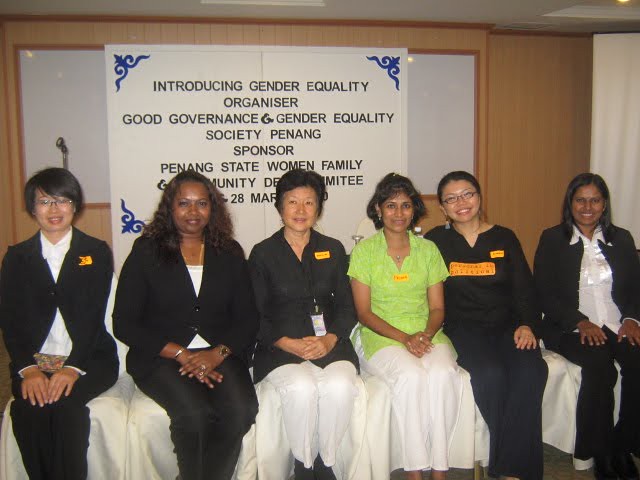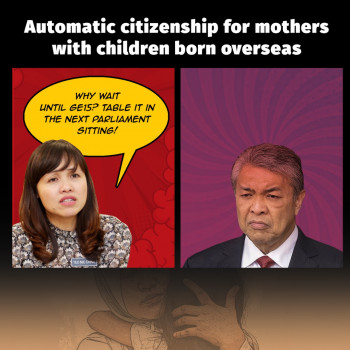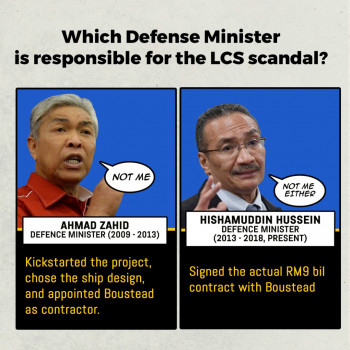A recent conference organised by the Good Governance and Gender Equality Society (3Gs), a Penang-based non-governmental organisation examined the mainstreaming of gender issues. Despite great strides made in granting women equal opportunities, legal efforts to close the gender gap have hardly made a dent in our persistently patriarchal habitat.
Achieving gender parity seems far-off in a conservative Asian society traditionally espousing a “men over women” mindset. In addition, societal expectations on women have remained stubbornly stereotypical despite increasing latitude granted to women in all fields.
Sticky Floor, Glass Ceiling
Whilst women comprise 62.3% of undergraduate degree holders in Malaysia, female labour force participation stands at 45.7%. Due to the shortage of affordable care facilities, many women quit working post-marriage or childbirth. Those choosing to return to work are not exempted from the traditional role of being primary caretakers of families, notes Loh Cheng Kooi, Executive Director of the Women’s Center for Change. Household duties are often assigned by default to women on the basis of their gender, making it a struggle for women to claim their share of the Malaysian dream on equal footing as their male counterparts. The twin goals of achieving professional success as well as caring for their family seem to be mutually exclusive, and balance is as elusive as the proverbial pot of gold at the end of the rainbow.
The bulk of female workers are concentrated in low or semi-skilled positions in the manufacturing and services sectors. With informalisation and casualisation becoming a workforce trend, many women have unstable income and do not enjoy benefits granted to formal workers. Moreover, the glass ceiling phenomenon still rings true as women continue to earn, on the average, less than men. They are less likely to be considered for promotion than their male counterparts, despite being equally, if not more qualified. Just 6.9% of the upper echelon in the public sector is made up of women. Perhaps the best example underscoring the masculinist nature of workforce is that while 71% of school teachers are female, only 8% of school principals are female.
Despite increased participation of women in the political arena, chauvinism and bigotry are still rampant with members of parliament getting away with sexist remarks such as the infamous “bocor” comment uttered by Datuk Bung Mokhtar Radin. Arguably, the name change of the Ministry of Women’s Affairs to the Ministry of Women, Family and Community Development reinforces women’s place in the home and family life, while women’s other roles in society become secondary. Meanwhile, advertising and media messages continue to portray women as the weaker sex at best and sex objects at worst. It comes as no surprise that Malaysia’s ranking in the Global Gender Gap Index has fallen from 92 in 2007 to 96 in 2008 and now to 101 in 2010.
Changing Who Decides What Gets Decided
Deconstructing the idea of gender, one finds that inherent differences between the sexes give rise to diverse needs and perspectives. According to Dr. Khoo Hoon Eng of the National University of Singapore, being hardwired differently causes men and women to make different decisions. Dr. Khoo’s opines that female leaders traditionally adopt a less-hierarchal, more communicative style of leadership. Judy Cheng-Hopkins, Assistant Secretary-General for Peacebuilding Support with the United Nations observed that in many post-conflict countries, women were agents of peace-building and positive change.
Women also have a unique viewpoint in other policy-making areas, particularly education, transportation, and even town-planning. Lim Kah Cheng, a Penang municipal councillor, suggests that a male architect designing a building might not have foresight to increase toilets for women or ensure viable laundry space.
Operating on an “old boys’ network” with a male-favouring culture results in poor governance. Political will is the missing component to bring gender parity to the forefront as transformative change requires a gender-responsive budget. Clearly-articulated social policies which adopt a gender-equality perspective are needed to re-orientate the mainstream. Moreover, the perception that gender justice is an unnecessary drain on resources must be combated.
Gender Justice is Profitable
Investing in capacity-building of women has a multiplier effect on socio-economic development, observes Professor Datin Dr. Rashidah Shuib, Director of the Women’s Development Research Centre of Universiti Sains Malaysia (KANITA). Leveraging the contribution potential of the invisibilised half of the population enhances labour productivity, starting a virtuous cycle. Conversely, studies show that unequal (including gender-imbalanced) societies produce low economic growth rates.
Dato’ Latifah Merican-Cheong of the Securities Commission suggests that gender-fair policies and gender integration are part of good governance for a merit-based economic framework. She advocates de-institutionalising the preference for male leaders prevalent in our political framework. An enabling environment must be created to empower women’s full and equitable participation in society.
The End of Men?
Due to an increased number of women being more highly educated than men, social norms and family structures are impacted. Some leaders have expressed concern at the perceived diminishing prestige of men and loss of male power, notably the secretary-general of CUEPACS’ statement that “the increasing dominance of female employees in the civil service will have long term implications on the progress and growth of our country”.
Should men feel threatened by gender equality? Chong Eng, president of 3Gs and Member of Parliament for Bukit Mertajam doesn’t think so. “Gender equality is not a women’s agenda. It is a social justice agenda to achieve balance and fairness for both men and women.” As Dr Cecelia Ng of Universiti Sains Malaysia says, it is a fallacy that gender equality pits women against men.
Recommendations: Quotas?
At the end of the 3Gs Conference, a declaration was presented to the Chief Minister of Penang, Lim Guan Eng. Among the key recommendations was a proposed imposition of a 30% quota for women in the state executive council, local council levels and the civil service. The justification for quotas, Chong Eng says, is that rampant gender inequality traps women in a vicious cycle. Affirmative action is an interim solution to break the cycle and fast-track women’s participation. After an appropriate period, the quotas can be removed.
According to Dr Lesley Clark of James Cook University and former Australian Member of Parliament, the affirmative action quota of the Labour Party has successfully increased the percentage of female MPs from 10% to 31%. Dr Clark clarifies that quotas are most effective when coupled with training to empower female candidates. She cites the example of EMILY’s List, an Australian organisation which provides funding, mentoring, training and campaigning support for female candidates.
While a similar Malaysian quota may yet be slow in coming, its suggestion highlights the need for serious measures to address our deeply-rooted gender imbalance. Public perception has been slow to recognise gender imbalance. Is gender a lightweight issue fit only to remain in the periphery? For gender mainstreaming to happen, women themselves have to first recognise it. As it stands, the average Malaysian woman often takes for granted that she can vote, drive, own and inherit property. It would not be too far-fetched to suggest that the last frontier of feminism is not men – but women.



